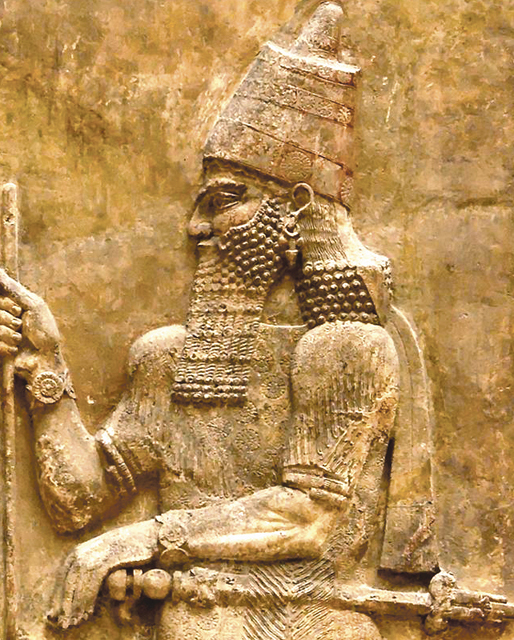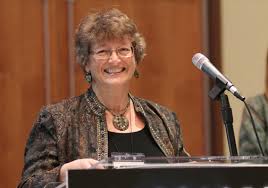Critical mass

Back to Basics Series
Jewish Family Education With Candace R. Kwiatek, The Dayton Jewish Observer
In 722 B.C.E., the Assyrians under Sargon II conquered the Northern Kingdom of Israel and scattered tens of thousands of their Israelite captives throughout the far-flung Neo-Assyrian Empire.
Prevented from congregating or maintaining their ways, the Israelite tribes that were forcibly resettled assimilated into the local cultures and came to be known as the Ten Lost Tribes.
When Babylonian King Nebuchadnezzar II conquered the same lands — along with Jerusalem and the Southern Kingdom of Judah 140 years later — he too exiled the captives.
But the Babylonian conquerors allowed the Israelites of Judah to settle together in communities. There, they revived and refocused Jewish tradition, created a new national identity and a new religion with the Torah — not the Temple — as its centerpiece. The core of today’s rabbinic Judaism emerged in Babylon.
What accounts for the difference in these two outcomes? Critical mass.

The concept of critical mass first appears in Jewish thought when Abraham bargains with God over the fate of Sodom and Gomorrah. Their dialogue concludes with God’s agreement to save the cities for the sake of 10 righteous people.
“The point here seems to be that goodness must reach a critical mass in order to offset the evil around it,” Rabbi Carla Freedman concludes in her essay, The Education of Abraham.
Just as significant numbers of dedicated, communal-living Jews offset Babylonia’s pervasive influences toward assimilation, only significant numbers committed to ethical behavior can influence the goodness of society.
Critical mass has also dramatically influenced female rabbinic leadership. Beginning informally in Europe in the early 19th century and then gaining adherents and official recognition throughout the 20th, female rabbis are now mainstream in liberal traditions.
With various titles of rabbi, rabba, and maharat, they are even increasing within “open” modern Orthodoxy, a direction that Elana Sztokman describes in the Forward as “a bizarre historic twist in which organizations seem to be racing against one another to demonstrate the greatest commitment to women’s advancement in religious Judaism.”
Revival and renewal of Hebrew as a modern spoken language introduces another perspective on critical mass.
Credited with the renaissance of Hebrew, Eliezer Ben-Yehudah instituted a multi-pronged approach of teaching and reinforcing Modern Hebrew at home and in school while simultaneously developing vocabulary to be used in everyday speech.
Early settlers in Palestine at the turn of the 20th century were a receptive critical mass for Ben-Yehudah’s ideas. Just as important was the critical mass of routine exposure and repetition that established Hebrew as a modern living language in one generation.
Like exposure and repetition, drilling, rehearsing, and training in critical-mass doses are fundamental to learning.
Aspiring physicians demonstrate critical mass learning and clinical practice before being awarded a degree, and as clinicians they must continue to engage with the knowledge and tasks in regular and meaningful ways to maintain and improve their competence.
The same concept may be applied to math skills or computer proficiency, reading or sewing or biking. Facility can only be gained and maintained through a critical mass of active engagement.
My garden offers another facet of critical mass. Despite planting hundreds of my favorite Ohio hardiness-zone perennial flowers, grasses, and groundcovers, I was still replanting and weeding large swaths of open space each year.
A friendly horticulturist noted that I’d included enough plants and rooted them well, but many weren’t the appropriate species for my soil and sun combination.
Just two years after replanting with better varieties, my garden is teeming with greenery, and I haven’t had to weed yet.
What do these reflections on critical mass contribute to understanding Jewish identity, Jewish families, and menschlichkeit? They reinforce the notion that Judaism isn’t solely a religion or a people or a culture or a land or a history or an ethical philosophy, but rather a fusion that should encourage wonder and discovery. They demonstrate that raw numbers — a critical mass of community members, program attendees, financial donors or dollars themselves — are only part of the Jewish story.
They point out that Judaism also depends on dedication to community, vision, innovation, and Torah. They illustrate that Judaism’s imperative to improve the world depends on Jews living ethically and influencing others to do the same. They testify to the importance of Jewish learning that is both authentic and meaningful.
In other words, if our goals are to nurture and cultivate our — or our children’s — Jewish selves and build a Jewish future, we shouldn’t risk pigeonholing ourselves or others with adjectives — cultural, spiritual, academic, Torah, culinary, synagogue, atheist, ethical, religious, secular, liberal, traditional — one identity that excludes even the possibility of others.
Rather, we should aspire to be serious Jews, actively engaged with multiple facets of Judaism in ways that are personally relevant, authentic, meaningful, creative, diverse, often comfortable, and just as importantly, occasionally challenging.
Every facet won’t appeal equally, but every experience entered thoughtfully will encourage growth.
Above all, critical mass is important, so engage regularly and frequently. It takes a lot of seeds to sprout into strong Jewish identities, flourishing communities, and long-lived legacies.
Literature to share
Front Lines by Michael Grant. Well-crafted, gritty, and realistic, this lengthy World War II historical fiction for young adults imagines the wartime experiences of three female soldiers — Jewish, African-American, and Californian — who want to enlist, each for her own reasons. Grant portrays vivid combat scenes and wartime atrocities alongside authentic expressions of racism, antisemitism, and sexism of the era. Although a bit dark, Front Lines is action-packed and filled with strong characters, believable dialogue, and historical accuracy, all of which make it a fully engaging winner.
The Light We Lost by Jill Santopolo. This modern love story draws the reader into the characters’ lives. The passion and lingering spice of first love, the comfort and security of a loving family, the allure and challenge of a loved professional life all converge to create a vortex of conflicts and choices, setting events in motion that lead to an unforgettable ending that is perhaps just another beginning. Compelling, realistic, and haunting. Strongly recommended.
To read the complete July 2017 Dayton Jewish Observer, click here.


